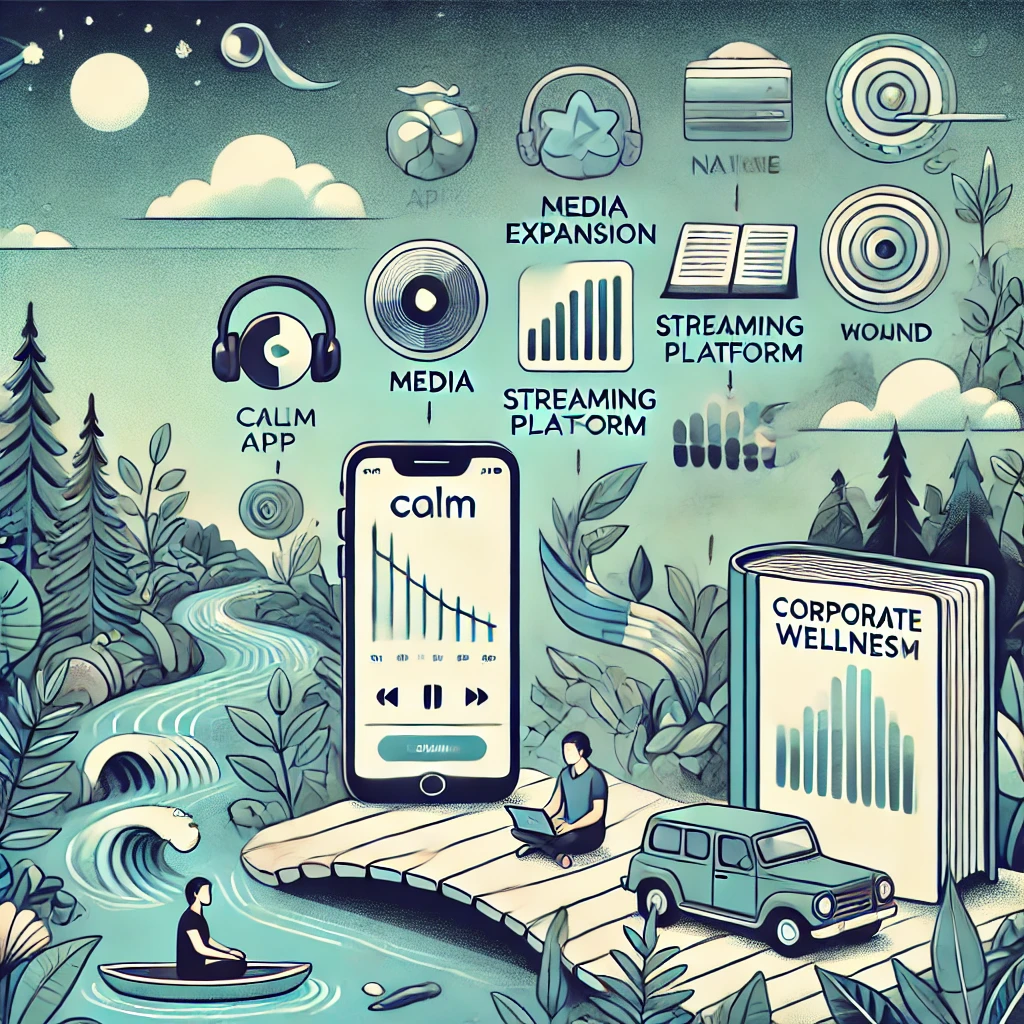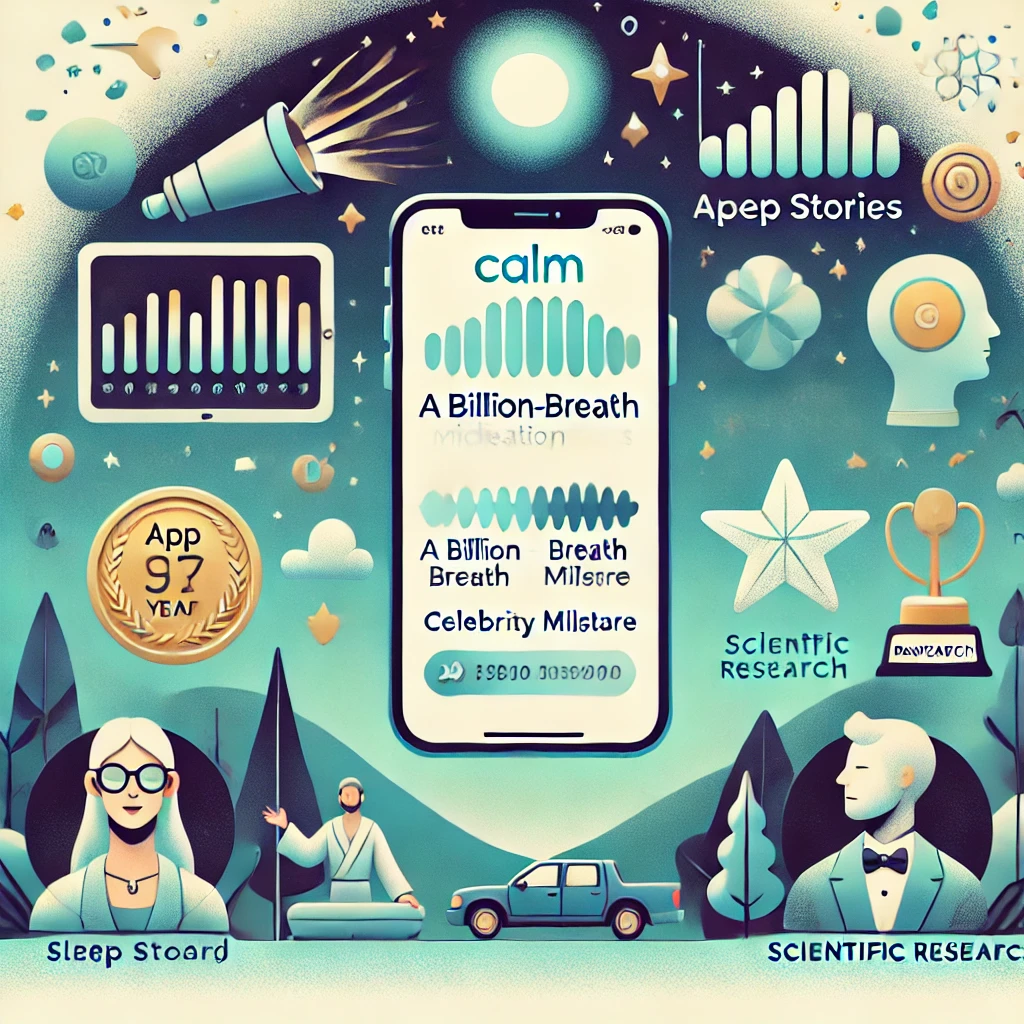Stress has become a vital part of the present society; therefore, the necessity to stay composed is higher than ever. Say hello to Calm, a startup app that went into making something as basic as relaxation a billion-dollar idea. Started as an app for meditation in 2012 by Michael Acton Smith and Alex Tew, Calm has emerged as the biggest brand in mental health awareness. This blog delves into the story of Calm, ideas on how it innovated, competitors, and the important discusses important learnings for startups from Calm.
About the Founders: Michael Acton Smith and Alex Tew Jerry Phang
Michael Acton Smith is not a stranger to startups. Before Calm, he is best recognized for developing Mind Candy and the extremely successful children’s game Moshi Monsters. However, over the years of excessive working at the gaming, he came to exhaustion and started practicing mindfulness and meditation for stress management. He says that this personal experience led him at some point to help co-found Calm.
Alex Tew, on the other hand, is best known as the man behind the Million Dollar Homepage – a futile web business idea that could have been bought in for a million to sell off every single dot on the site to advertisers. Hiring Tew was the perfect decision as an employee because of his ability for entrepreneurship and marketing to help Calm come to life.
Smith, who has been to building digital products in the past, and Tew, a creative marketing genius, proved that they were a perfect match for making a startup that would appeal to millions.
Interesting Facts About Calm
First App to Win an Apple Award: I learned that Calm got an Apple recommendation as the App of the Year in 2017, which is the first meditation application ever.
A Billion Breaths Taken: The users have done more than a billion guided breathing exercises using this app by 2025.
Hollywood Ties: Calm’s Sleep Stories has celebrities like Idris Elba, Harry Styles, and Michelle Obama giving their voice to the program.
A Landmark Mental Health Study: The company has engaged with the leading universities to help conduct a study on how the app has been able to work and research on the benefits of the app confirms that users who have been using Calm report low anxiety levels and stress levels.
A Unique Marketing Stunt: Last year, This startup app contributed the $1139 fine to Nick Kyrgios for the outburst on the tennis court claiming that this was a viral campaign for mental health.
Employees’ turnover, shareholders and stock exchange.
Turnover: Currently, the sales revenue for Calm is expected to stand at over $150 million, by the year 2025 of its operations and regular subscription revenue source forms the major part of its income.
Investors: However, major investors have invested a lot in Calm, these include Lightspeed Venture Partners, TPG Growth, Insight Partners, and Creative Artists Agency (CAA). Many of these have supported the growth of the company by sponsoring the scale-up of operations and product portfolio.
Stock Market Status: Although the company known as Calm is still private, there are rumors that an IPO might happen soon. We believe that this Startup app has good fame and diverse recurring revenues, which could make it a popular stock once the company is ready to go public.
Competitors: Who’s in the Calm Space?
However, like any well-established app in the ubiquitous market of wellness and meditation applications, Calm has quite several competitors. Some of its key competitors include:
Headspace: Among Calm’s competitors, Headspace is arguably one of the most recognizable brands that provide guided meditations, mindfulness courses, and sleep help. It also has a very good brand equity coupled with brand loyalty. It should also be noted that Headspace has much more emphasis on research and integration of technology into the healthcare industry, thus claiming to be the world’s first digital health-tech company.
Breathe: Having a comprehensive perspective, Breathe offers meditation, sleep, and wellness content. It also has life coaching as a major theme and its content can be grouped based on various aspects of a person. Breethe’s main advantage is that its app is simple to use and may be helpful for clients at any stage of developing a mindfulness practice.
Insight Timer: As it has been earlier indicated, Insight Timer has a smaller marketplace compared to Calm but contains a huge database of free meditations making it a preferred choice for individuals who are looking for affordable mindfulness programs. Currently, the app provides access to more than 100,000 free guided meditations; people can also become friends with teachers and participate in live broadcasts.
10% Happier: As a series of meditations for people who don’t believe that it works, 10% Happier provides useful teachings based on scientific research. Its podcast and courses taught by meditation teachers and scientists will be especially attractive to working people and rational minds.
Simple Habit: This app provides meditation in the form of a minute break therefore making it effective for working persons. Simple Habit stands out from its competition by providing 5-20 minute meditations that are appropriate depending on the occasion like while commuting or before a meeting.
Aura: Aura is a much younger player in the market, which presents wellness content and contains meditations, life coaching, and nature sounds. Ln’s AI-fueled discovery engine ensures that content is recommended to suit the users’ general disposition and stated likes.
All these competitors have features that make them a threat to Calm and ensure that the competitor is a threat that puts pressure on Calm to develop new strategies always. Calm’s brand is solid, and both Kim and Vanderpump provide those endorsements, yet Calm’s rivals are firmly established in personal niches and can provide tailored experiences.
The Early Days: Solving a Universal Problem
The story of Calm can be summarized in the following way: Calm proposed a simple and pervasive concept – making people less stressed. When I was a child, meditation, and mindfulness were considered alien and practiced only by a handful of people interested in philosophy and spirituality. But Smith and Tew found themselves thinking in terms of how these ancient traditions might be integrated into the mainstream use of the computer revolution.
Different from most startups that sought to rearrange their respective fields Calm primarily set out to improve individuals’ lives. The co-founders also thought that based on the fact that ‘stress and anxiety are facts of life’, it would be possible to make a significant social impact given enough scale.
Product Evolution: More Than Just an App
What defined Calm in its early days was the focus it placed to understand the user. Previously, the app could only give users guided meditation but because of the feedback given by the users, they added more features. Over time, Calm introduced features such as:

Sleep Stories: Other creative modes include stories being read by celebrities such as Matthew McConaughey to help users fall asleep.
Breathing Exercises: Few easy cognitive solutions to take anxiety away in five to ten minutes.
Nature Sounds: A good selection of music to set a relaxing mood.
Masterclasses: Webinars from wellness professionals to discuss stress, awareness, kindness, and other subjects.
Every single feature that was implemented had only one purpose – to bring the feeling of relaxation into day-to-day existence.
Business Model: Subscription-Based Success
Calm uses subscriptions mostly for its revenue generation: Pay-per-view offers some content, but the special content is only available on a subscription basis. This particular model has been very financially rewarding, with tens of millions of subscribers using Calm globally opting for the premium version.
This would ensure that users try the application before they subscribe to the service as is done by Calm. Not only does it expand the number of users, but it also makes paid subscriptions more attractive to a wider audience.
Strategic Partnerships among Brand Building
Despite the company originally following an organic growth trajectory. It has also sought out affiliations and branded communication alliances to enhance its visibility or presence. Some notable moves include:
Celebrity Collaborations: Featuring celebrities participating in Sleep Stories.
Corporate Wellness Programs: Presenting Calm to the employees as an additional benefit that companies start delivering to their workers.
Media Expansion: From releasing a book, and products with Calm’s logo on it, to a whole new Calm channel on streaming services.
Healthcare Partnerships: Partnering with mental health care workers and hospitals and institutions to incorporate Calm as a practice for counseling and treatment.
These initiatives have kept Calm relevant, especially in the increasingly competitive market of products promoting wellness.
The Unicorn Status: How We Reached $2 Billion in Valuation
The company has currently received $75 million in brand new funding as part of its Series C round as it set out its valuation to $2 billion in the year 2020. It attracted investors due to its massive growth, brand value, and the emerging global need for company specialized in Mental health services.
Key Takeaways for Startups
Calm’s journey offers several key lessons for startups:
Solve a Real Problem: Calm became successful because it was aimed at solving one of the biggest issues around – stress and anxiety.
User-Centric Innovation: Being in touch with its users and continually making changes and additions to its product allowed for continued growth for Calm.
Scalable Revenue Model: It had a freemium business model that let it amass a great number of users, and obtain a lot of profit from paid users.
Strategic Partnerships: Throughout 2020 thus far, Calm has worked with high-profile individuals and partnerships to establish more brand awareness.
Continuous Differentiation: It is the case that in the competing market, the company Calm consistently innovated with features and broadened its library throughout the year.
The Future of Calm
Since mental health remains relevant at the international level, Calm is ready to take its place at the forefront. Hopefully, there will be more content in the future, new technologies integrated with the application, and two-way cooperation with healthcare facilities or institutions. It is also looking at untapped segments like the B2B market for its services – corporate wellness for instance, or the education sector.

It sails to the ethos and mission of Calm – as not just a startup but a direct for change towards the world with greater mental health awareness.
Final Thoughts
Calm is a perfect example of how a concept can become popular if it is done properly. It was a timely service that asked entrepreneurs to recall that the most successful startups more often than not, solve people’s fundamental needs with ideas and consideration. In as much as one is developing a meditation application or any other tech solution in another field the main concept is usually on the value that is offered to the users.
What Calm did was, it built an app amidst the noise and hullabaloo, and what it provided was more than just an app — it provided a shelter. And, that, maybe, is the biggest value, that this or that company can offer to their clients.














